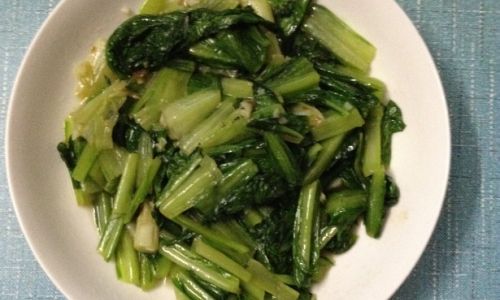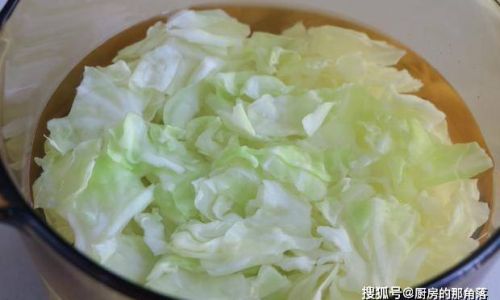Introduction
Stir-frying, a cornerstone of Chinese culinary tradition, is a cooking technique that transforms simple vegetables into vibrant, flavorful dishes. At its core, stir-frying involves cooking ingredients over high heat in a minimal amount of oil while constantly stirring or tossing them. This method preserves the vegetables’ natural colors, textures, and nutrients, resulting in dishes that are both visually appealing and delicious. While seemingly straightforward, achieving stir-fry perfection requires attention to detail, from ingredient preparation to heat management. This article delves into the nuances of stir-frying vegetables, offering insights into tools, techniques, and tips to elevate your home-cooked meals.
Essential Tools for Stir-Frying
- Wok: The heart of stir-frying, a wok’s rounded shape and high sides distribute heat evenly, allowing for quick, efficient cooking. Carbon steel woks are ideal due to their excellent heat retention and responsiveness. Non-stick woks are convenient but may lack the seasoning and patina that enhance flavor over time.
- Spatula or Wok Ladle: A sturdy metal spatula with a curved edge is essential for tossing ingredients and scraping the wok’s surface to prevent sticking.
- High-Smoke-Point Oil: Peanut oil, canola oil, or grapeseed oil are excellent choices, as they withstand high temperatures without burning.
- Sharp Knife and Cutting Board: Precision in chopping vegetables ensures even cooking. Invest in a quality chef’s knife and a stable cutting board.
- Prep Station: Organize ingredients before cooking—stir-frying moves quickly, leaving no time for mid-prep adjustments.
Preparation: The Foundation of Success
Stir-frying demands meticulous preparation, often referred to as mise en place in professional kitchens.
-
Vegetable Selection and Cutting:

- Texture and Shape: Cut vegetables into uniform pieces to ensure even cooking. For example, slice bell peppers into strips, cube carrots, and halve Brussels sprouts.
- Density Matters: Denser vegetables (e.g., broccoli, carrots) may require partial blanching or microwaving before stir-frying to soften them slightly, preventing undercooked centers.
- Leafy Greens: Spinach, kale, or bok choy should be washed thoroughly and dried to avoid excess moisture, which can steam vegetables instead of stir-frying them.
-
Aromatics and Seasonings:
- Garlic, Ginger, and Chilies: Mince or slice these aromatics finely to release their flavors quickly.
- Sauces: Prepare a stir-fry sauce in advance, combining soy sauce, oyster sauce, sesame oil, and a pinch of sugar. Adjust ratios to taste.
- Cornstarch Slurry: For saucier dishes, mix cornstarch with water to thicken the sauce at the end of cooking.
Mastering Heat and Technique
Stir-frying is a dance of heat and motion. Mastering these elements is critical to avoiding soggy or burnt vegetables.
-
Preheating the Wok:
- Place the wok over high heat until a drop of water evaporates instantly. Add oil and swirl to coat the surface—this creates a non-stick layer.
- The “Wok Hei” Effect: Achieving wok hei, or “breath of the wok,” imparts a smoky, charred flavor. This requires extremely high heat, often only possible with a gas stove or a powerful burner.
-
Cooking Order:
- Aromatics First: Add garlic, ginger, or chilies to the hot oil, stirring briefly until fragrant (10–15 seconds).
- Hard Vegetables Next: Introduce dense vegetables like carrots or broccoli. Stir constantly for 2–3 minutes.
- Soft Vegetables Follow: Add quicker-cooking ingredients like bell peppers or snap peas, stirring for another 1–2 minutes.
- Leafy Greens Last: Toss in spinach or bok choy during the final minute to wilt without overcooking.
-
Stirring and Tossing:
- Use a pushing motion with the spatula to move ingredients from the center to the sides of the wok, ensuring even exposure to heat.
- Avoid overcrowding the wok, as this lowers the temperature and steams vegetables instead of stir-frying them. Cook in batches if necessary.
-
Seasoning and Finishing:
- Pour the pre-mixed sauce around the wok’s edges (not directly onto vegetables) to prevent cooling the pan.
- Toss gently to coat ingredients. For a glossy finish, drizzle a teaspoon of sesame oil just before serving.
Common Mistakes and How to Avoid Them
-
Overcrowding the Wok:
- Issue: Excess ingredients trap moisture, leading to steaming instead of stir-frying.
- Solution: Cook in batches, using a larger wok or a skillet if needed.
-
Inconsistent Heat:
- Issue: Low heat results in soggy vegetables; uneven heat causes burning.
- Solution: Preheat the wok thoroughly and maintain high heat throughout cooking. Adjust burner settings if smokiness becomes excessive.
-
Poor Knife Skills:
- Issue: Unevenly cut vegetables cook at different rates.
- Solution: Practice chopping techniques for uniformity. Use a mandoline for slicing delicate vegetables like zucchini.
-
Adding Sauce Too Early:

- Issue: Early addition cools the wok and dilutes flavors.
- Solution: Keep sauces ready but add them only in the final moments of cooking.
Flavor Enhancements and Variations
Stir-frying is incredibly versatile. Experiment with these ideas to customize dishes:
- Proteins: Add tofu, shrimp, or sliced chicken breast. Marinate proteins first to tenderize and flavor them.
- Nuts and Seeds: Toast cashews, peanuts, or sesame seeds and sprinkle over finished dishes for crunch.
- Aromatic Liquids: A splash of rice wine or Shaoxing wine adds depth. Deglaze the wok with a tablespoon after cooking aromatics.
- Spices: Incorporate Sichuan peppercorns, star anise, or chili flakes for heat and complexity.
- Herbs: Fresh cilantro, basil, or mint leaves, tossed in at the end, brighten flavors.
Recipes to Try
-
Garlic Broccoli Stir-Fry:
- Blanch broccoli florets in boiling water for 1 minute, then shock in ice water.
- Stir-fry minced garlic, add broccoli, and toss with oyster sauce and a pinch of sugar.
-
Spicy Chili Green Beans:
Trim green beans and stir-fry until blistered. Add chili paste, garlic, and a splash of soy sauce.
-
Mixed Vegetable Medley:
Combine sliced mushrooms, bell peppers, and snap peas. Toss with a sauce made from soy sauce, hoisin, and a cornstarch slurry.
Health Benefits of Stir-Fried Vegetables
Stir-frying offers a nutrient-packed cooking method:
- Retains Vitamins: Short cooking times minimize vitamin loss, unlike boiling or steaming.
- Low in Fat: Uses minimal oil compared to frying or sautéing.
- Versatile Dietary Options: Easily adaptable for vegan, gluten-free, or low-sodium diets by adjusting seasonings.
Conclusion
Stir-frying vegetables is a skill that rewards patience and practice. By mastering heat control, precision in preparation, and the art of seasoning, you can create dishes that rival restaurant quality. Experiment with vegetable combinations, spices, and sauces to develop your signature style. Whether you’re a novice cook or a seasoned home chef, the stir-fry technique offers endless opportunities to explore flavors while nourishing your body. So grab your wok, sharpen your knife, and embark on a culinary adventure—one that celebrates the simplicity and brilliance of vegetables at their finest.





0 comments